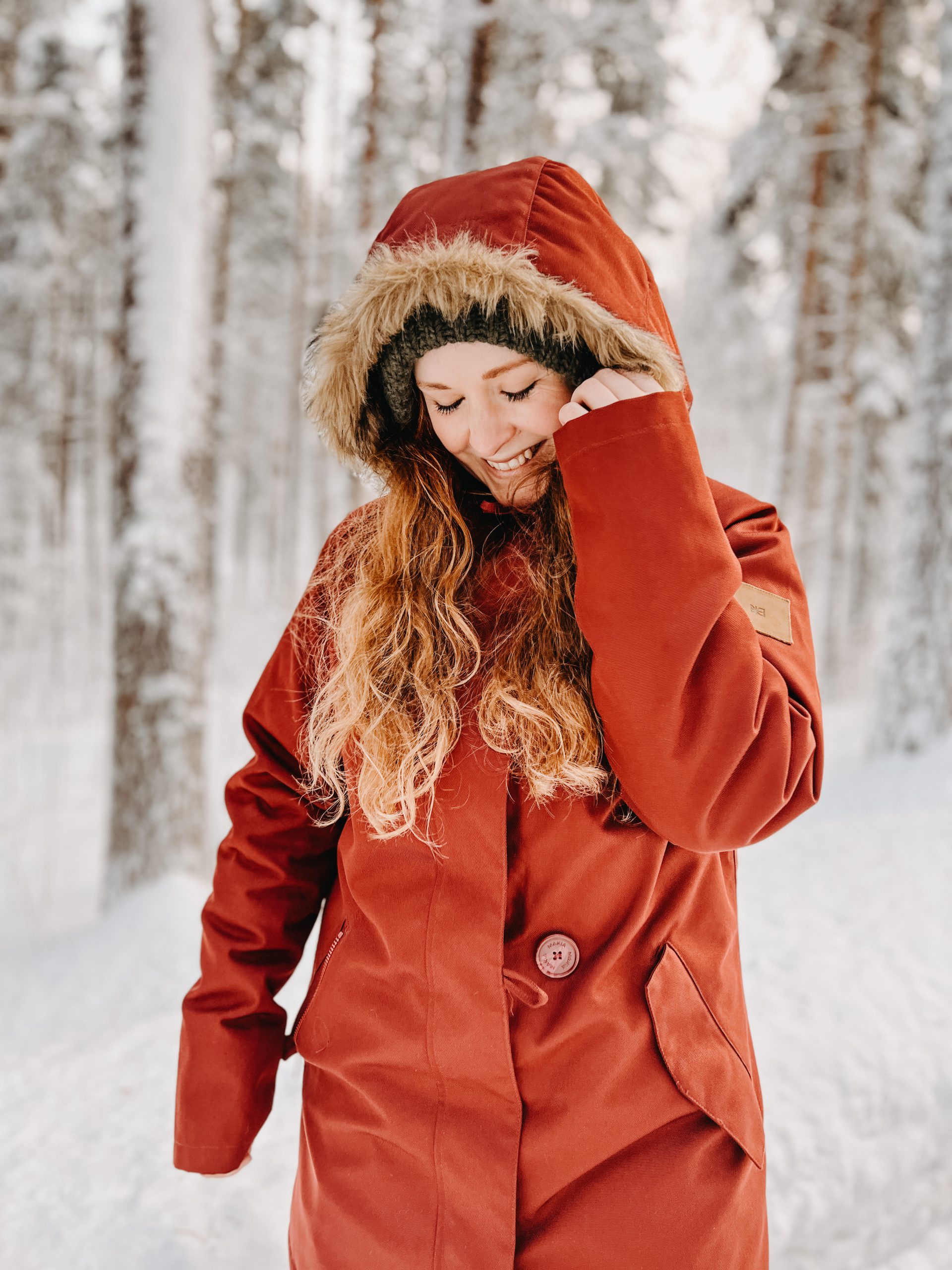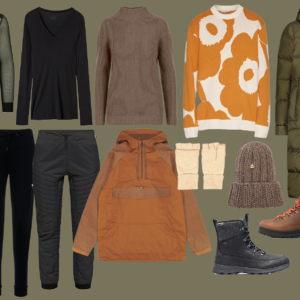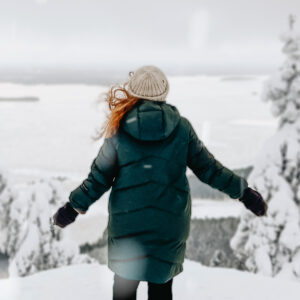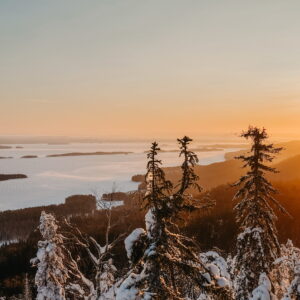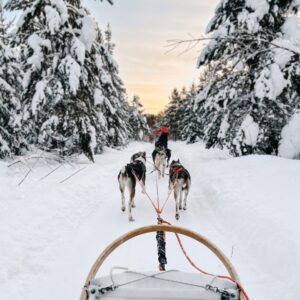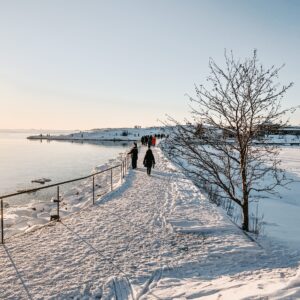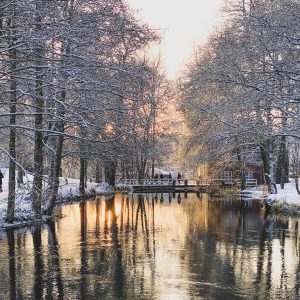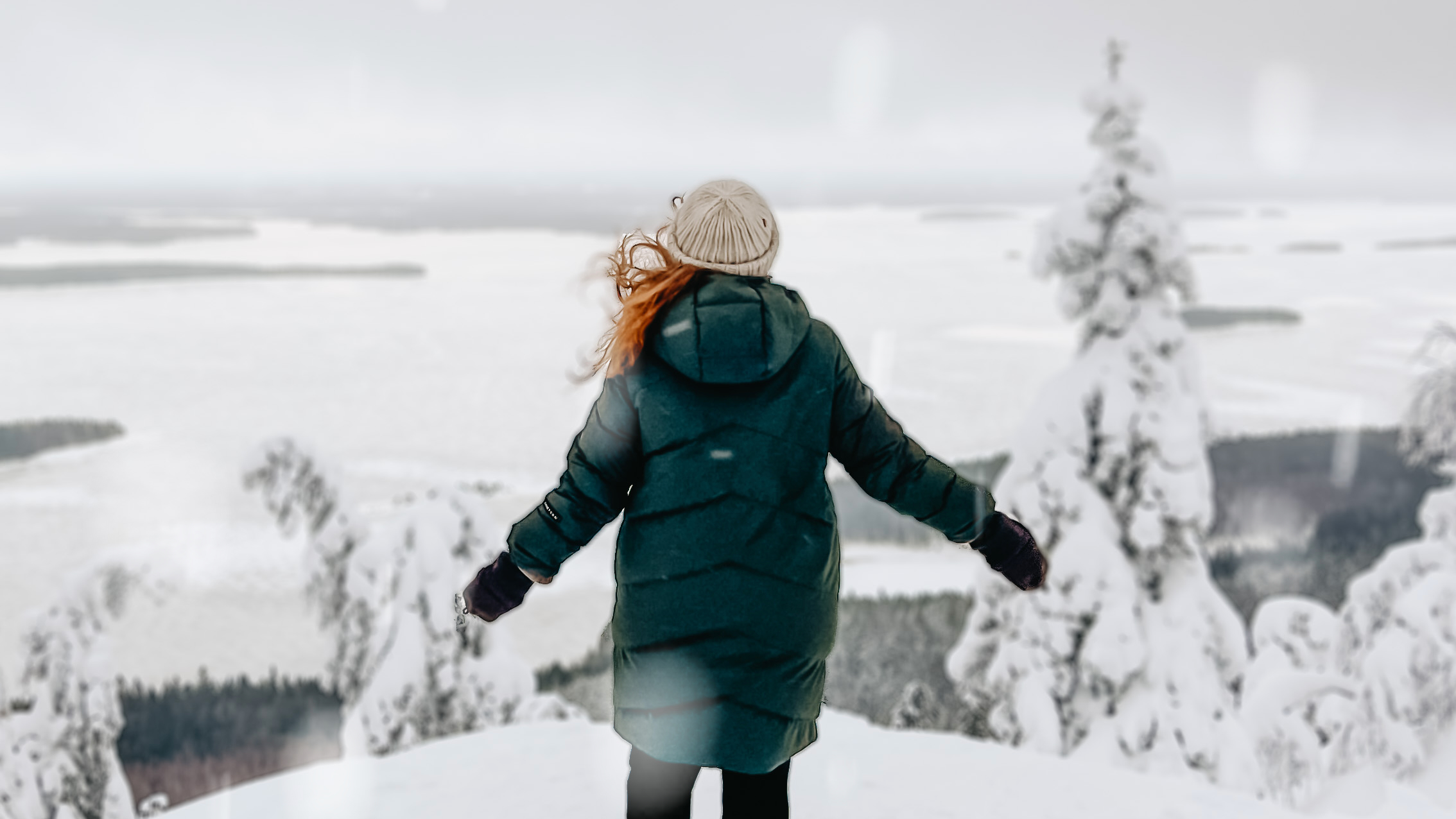
Answering 25+ of Your burning questions about Winter in Finland
Find your answers:
What are the legal requirements for purchasing a cabin in Finland?
Requirements are similar to purchasing any property, real estate or land in Finland:
Identification: you must provide valid identification, such as a passport or Finnish identification card.
Funding: proof of funds, or/and arrangement of financing if you’re purchasing the cabin through a mortgage or loan.
Lawyer: It’s advisable to engage a licensed real estate agent or lawyer to facilitate the transaction and ensure legal compliance. Especially as a foreigner working through the language barrier can be challenging. Not just for any contracts or paperwork, but also for negotiations with agents, owners or the local municipalities legal support can be incredibly useful. We worked with Ville Lahti from Vasara & Nuija, who helped us with anything that came our way, regarding questions about the laws, contracts, process and also about specific things to look out for. Highly recommended, we wouldn’t have this cabin without him.
Real Estate Agent or broker: most, if not all properties I came across, are managed by an agency, respectively an agency representative. They are responsible for all communications between seller, buyer and the banks; as well as all paperwork. Our agent was incredibly patient and kind, and genuinely excited to help us, which made the whole process so much easier. I’m so grateful we trusted each other and everything went super smoothly. If you are looking for a cabin in the area of Mikkeli, reach out to Pia Hiltunen.
Written Offer/Purchase Agreement: you can decide to make an offer at any point, some people make offers without viewing the property. We made an offer at the end of our showing. This written purchase agreement must be made official through (electronically) signing it afterwards. It details the terms and conditions of the sale must be signed by both the buyer and seller. This agreement typically includes details such as the purchase price, payment schedule, and any contingencies. If you end up not going through with the sale after the written offer is signed, there is typically a penalty fee that’s a certain percentage of the asking price.
Title Search and Deed Transfer: A title search is conducted to verify the ownership history and any encumbrances on the property. This includes all listed owners and rights of use. Once cleared, the deed is transferred from the seller to the buyer. This was organised through our agent
Property Registration: The transaction must be registered with the Finnish Land Registry to officially transfer ownership rights. This can be done online and is pretty straight forward, you just must make sure to do this within the given deadlines.
Taxes and Fees: Buyers are responsible for paying various taxes and fees associated with the purchase, including transfer taxes, bank fees, and registration fees.
Permits and Approvals: Depending on the location and condition of the cabin, buyers may need to obtain permits or approvals for renovations, construction, or other activities.
Legal Due Diligence: It’s essential for buyers to conduct thorough due diligence to ensure there are no legal issues or disputes affecting the property, such as boundary disputes or environmental concerns. In our case, this was all communicated very transparently, especially regarding building rights, grounds, building history and whatnot.
Residency Permit (for non-EU/EEA citizens): Non-EU/EEA citizens may need to obtain a residency permit or permission from the Finnish Immigration Service to purchase property in Finland.
What amenities and utilities are typically available in Finnish cabins?
Electricity: Most, but not all, Finnish cabins are connected to the electrical grid, providing power for lighting, appliances, and electronic devices. Depending on when the cabin was built, the wiring can be outdated and might need upgrading, also to meet modern safety standards. Electricity costs in more remote areas can be higher. It’s quite common these days to equip your cabin with solar panels for basic electricity needs.
Running Water: Many cabins have access to running water either from a municipal water supply or a private well. Some cabins may also have a water pump system to draw water from a nearby lake or stream, which is what we are planning to do. However, most cabins that are built on holiday plots are not connected to water or sewage systems.
(Indoor) Plumbing: Modern cabins often feature indoor plumbing with toilets, sinks, and showers, or bathtubs. However, most older or more basic cabins will have an outhouse or dry toilet instead. Those are easy to maintain and environmentally friendly if handled correctly.
Heating: Heating options in Finnish cabins can include wood-burning stoves, electric heaters, or even central heating systems fueled by wood, electricity, or oil. Wood-burning saunas are also common and provide a traditional way to relax and unwind.
Kitchen Facilities: Cabins typically have a kitchen area equipped with basic appliances such as a stove and fridge. Some may also have a microwave, dishwasher, or other conveniences depending on space and preference.
Sauna: A sauna is a quintessential feature of Finnish cabins, offering a relaxing and rejuvenating experience. I haven’t seen any cabins without their own private sauna, either within the main house or in a separate saunamökki.
Outdoor Spaces: Finnish cabins often have outdoor spaces such as decks, patios, or porches where you can enjoy the natural surroundings, barbecue, or socialise with friends and family. This also depends on the type of plot you want. We wanted a forest surroundings, so it was important for us to have trees and berries around us. Others may prefer a type of lawn, garden or beachy plot.
Internet and Communication: While some remote cabins may lack internet access, many modern cabins are equipped with Wi-Fi or have access to mobile networks for communication and internet browsing. We use our phone hotspot for wifi needs, which works well enough in Finland, even when further out in the sticks.
Waste Management: Cabins typically have systems in place for waste management, including garbage disposal and recycling facilities. Some cabins may also have composting toilets or septic tanks for wastewater. In our cabin, we have a shared garbage bin that’s emptied once a week in the summer, and not in the winter.
Security Features: Depending on the location and your preferences, you can install security features such as locks, alarms, or surveillance systems (both for security and also wildlife watching) while unoccupied.
Are there any regulations or considerations regarding the environment and building to be aware of when purchasing a cabin in Finland?
Building Codes: Ensure compliance with regulations for energy efficiency and ecological materials. This can be tricky to verify with older properties.
One common thing to note is that nowadays, saunas must be a certain distance from the water if built by a lake or the seaside. Older saunas however can stay and can be renovated, as long as the roof and foundations remain the original.
Water Protection: Verify wastewater disposal systems adhere to water protection regulations. This is especially important to note with properties that are not connected to the sewage and wastewater pipe systems.
Protected Areas: Check if the cabin is located in or near protected nature reserves or conservation areas. This affects what you are allowed to do and build.
Forestry Practices: Be aware of regulations governing tree harvesting and biodiversity protection. There are some regulations about what you can build or harvest.
Waste Management: Ensure proper waste disposal facilities and recycling practices. In our case, we have a basic mixed waste garbage bin used by all the cabins in our road. For anything else, we have to drive to the nearest sortti- or jäteasema to dispose of waste.
Energy Efficiency: Consider investing in energy-efficient appliances and renewable energy sources.
Outdoor Recreation: Follow guidelines for responsible outdoor activities to minimize environmental impact.
Wildlife Protection: Respect wildlife habitats and adhere to regulations regarding hunting and wildlife interactions.
Are there any specific insurance requirements for owning a cabin in Finland?
Yes, you must get home insurance for a vacation property. The details differ from each provider, but typically should protect you against any damage from natural forces (water, flooding etc.), it has also been recommended to us to get additional insurance against wildlife damage.
Can cabins in Finland be rented out to tourists or used as vacation rentals?
Yes. Some things to consider:
Regulations and Permits: Comply with any local regulations or ordinances regarding short-term rentals. In some areas, there may be specific requirements or permits needed for renting out properties.
Taxation: Rental income earned from vacation rentals is subject to taxation in Finland. Be aware of your tax obligations, and report rental income to the Finnish Tax Administration.
Safety and Liability: Inform guests about, and take appropriate measures to address any potential hazards on the property. Liability insurance can provide protection in case of accidents or injuries involving guests.
Are there any potential risks or hazards associated with wildlife, such as bears or wolves, in the vicinity of the cabin?
In Finland, encounters with large wildlife such as bears and wolves are relatively rare, but they can still occur, especially in certain regions where these animals are more common. Most wildlife you see is harmless, such as foxes, deer, moose, wolverines, ferrets, mink, squirrels, birds, mice or also snakes.
How do Finns stay active and healthy during the dark and cold winter months?
It sounds stupid, but it is a lot about the mindset (you might call it sisu). If you hide away from the winter and choose to hate the darkness and the cold, you will also not have a good time. Here are some tips:
- Get a daylight lamp – it helps you get up in the morning by regulating your natural rhythm
- Supplement Vitamin D – always consult your doctor or pharmacist
- Sauna and ice swimming – great for well-being and your immune system
- Make plans outside of your home – stay active and social
- Spend time in nature – no matter if it’s just a short walk or a whole day on skis, being out in nature helps a lot
- Get the right clothing – if you’re cold and uncomfortable, you won’t love winter. It’s that easy. Make sure you invest in a good set of basic clothing and gear, and it will make ALL the difference.
What wildlife can be observed in Finnish winter landscapes?
Mostly reindeer (in Northern Finland) and moose. Bears hibernate in the winter. Lynxes are also out but not common to spot.
Do lakes and the sea freeze in Finland in winter?
Yes! The first lakes freeze already in October.
Both the seas and the lakes in and around Finland freeze thick and far out. In Helsinki, you can expect the sea to freeze in February, in area of Kemi, the icebreakers are out from December to April to break the ice for other vessels.
Note: NEVER go on the ice alone or unless you are absolutely certain that it is extremely thick and frozen thicker than 20cm at least. Always inform someone who knows where you are if you are planning an icy excursion.
Are there any safety tips for winter in Finland?
- Get the right clothing and equipment: staying warm in the cold is the most important and will keep you healthy
- Dress in layers
- get insulated outerwear
- invest in good basics
- Footwear is just as important: not just for the sake of warm feet but also on slippery, icy roads. Always be careful when walking on ice, even the best of us have accidents.
- Insulated, waterproof boots with good traction are crucial
- Warm, moisture-wicking socks are important for keeping your feet dry and warm. Always opt for wool.
- Keep an eye on the weather forecast and listen to the locals
- Know your limits and don’t push it: it’s not a competition with the elements.
- Common sense gets you very far. Pay attention to your surroundings and don’t take risks.
- Finland is generally very safe and people look out for each other.
Can you ice skate on natural frozen bodies of water in Finland?
Yes! It’s popular and easily accessible. On most natural tracks you will need your own skates though.
In the Helsinki area, you can find maintained skating tracks and their condition information on the Outdoor exercise map (both natural and articifial).
What's the significance of the "blue moment" in Finnish winter photography?
The “blue moment” is a significant and magical phenomenon in Finnish winter photography. It refers to the brief period during the winter when the natural light takes on a unique, deep blue hue, creating a stunning and serene atmosphere.
This phenomenon occurs during the twilight hours, typically in the late afternoon or early evening when the sun is just below the horizon.
What's the role of darkness and the concept of "kaamos" during Finnish winters?
“Kaamos” refers to the polar night, a period during the winter when the northern parts of Finland experience an extended period of darkness, typically from late November to early January.
It occurs in Northern region where the sun does not rise at all, all though it is commonly referred to the very dark period in the year, also further South.
Are there any ice hotels or unique accommodations that are popular in the winter?
Absolutely! The glass igloos are probably the most famous, along with the snow- or ice hotels. Here are a few options:
- Kakslauttanen Arctic Resort
- SnowCastle of Kemi
- Arctic SnowHotel and Glass Igloos
- Santa Claus Village
- Levi Ice Gallery
- Lainio SnowVillage
- Aurora Domes
- Harriniva Hotels & Safaris
- Wilderness Hotels
Are there any special winter markets or fairs in Finland?
You can find Christmas markets all around Finland, not just in the bigger cities. The Helsinki Tuomaan Markkinat is famous and has developed into one of the nicest ones around.
What are the typical costs associated with buying a cabin in Finland, including taxes and fees?
Purchase Price: The largest cost is typically the purchase price of the cabin itself, which varies based on factors such as location, size, amenities, and condition.
Transfer Tax (Varainsiirtovero): In Finland, a transfer tax is payable by the buyer when purchasing real estate. The tax rate is currently 2% for residential properties, including cabins. However, there are some exemptions for first-time homebuyers and certain other circumstances.
Real Estate Agent Fees: If you use a real estate agent to facilitate the transaction, you may be responsible for paying their commission, which is typically a percentage of the purchase price. This commission can vary but is usually around 3-4% of the purchase price. It is, however, more common that the seller covers the commission.
Legal Fees: Hiring a lawyer to handle the legal aspects of the transaction, such as reviewing contracts and conducting due diligence, will incur legal fees. The cost can vary depending on the complexity of the transaction and the lawyer’s rates.
Notary Fees: Notarization of the purchase agreement and other legal documents may involve additional fees charged by a notary public. For us, this was 120€, with seller and buyer splitting the fee.
Registration Fees: The transfer of ownership must be registered with the Finnish Land Registry, which involves paying registration fees. These fees are typically based on the purchase price of the property.
Mortgage Fees (if applicable): If you’re financing the purchase with a mortgage, there may be fees associated with arranging the loan, such as appraisal fees, loan origination fees, and mortgage registration fees.
Home Inspection Fees (optional): While not mandatory, it’s advisable to conduct a home inspection before purchasing a cabin to identify any potential issues or defects. The cost of a home inspection varies depending on the size and condition of the property. We did not conduct an official inspection.
Utility Connection Fees: Depending on the cabin’s location, there may be fees associated with connecting utilities such as water, electricity, sewage, garbage disposal and road maintenance.
Property Insurance: Buyers will need to arrange property insurance to protect their investment against risks such as fire, theft, and natural disasters. The cost of insurance can vary based on factors such as the property’s location and value.
Are there specific areas or regions in Finland known for having cabins for sale?
Archipelago Sea: Located in southwestern Finland, the Archipelago Sea is a vast network of thousands of islands, offering picturesque landscapes, excellent boating, fishing, and opportunities for outdoor recreation.
Lakeland: Finland’s Lakeland region, with its numerous lakes and forests in central and eastern Finland, is a popular destination for summer cottages. Areas such as Saimaa, Päijänne, and Kuopio are particular favourites.
Turku Archipelago: Close to the city of Turku on the southwest coast, the Turku Archipelago is another sought-after destination for summer cottages, known for its stunning landscapes, charming islands, and maritime culture.
Eastern Finland: Regions such as North Karelia and South Savonia in eastern Finland offer beautiful lakeside settings and unspoiled nature.
You can find statistics on free-time homes around Finland here
What clothing is essential to stay warm in Finnish winters?
How do I find listings for cabins in Finland? Where do I start searching?
- Most common places are Etuovi and Oikotie, for finding properties in Finland. You can search here for the Loma-asunnot (holiday homes).
- These are mostly in Finnish only, but work well with a translation app.
- I found it very helpful to create search alerts, which would send me instant notifications as soon as something came up that matched my search parameters. This is how we got lucky with our cabin.
- You can also reach out to agents or agencies directly with what you are looking for. It didn’t work for me personally, but it is worth a try regardless.
- Facebook groups: these are very effective when it comes to the mökki community in Finland. This is one example to search for: Mökkien osto/myynti/vuokraus+mökkitontit
- Local newspapers: especially the older generation that doesn’t internet, local newspapers or even blackboards in supermarkets can be a good place to look for cabins for sale or rent. These are mostly in Finnish only.
Are there any seasonal considerations or challenges when buying a cabin in Finland?
Winter Accessibility: During winter, cabins may become inaccessible due to heavy snowfall. Make sure the cabin has proper access roads or arrangements for snow removal for year-round access if you want to be able to use the cabin in the winter. Cabins on islands can be accessed by snowmobile in the winter when the ice is thick enough.
Heating and Insulation: Finnish winters can be cold, so it’s important to consider the heating systems and insulation of the cabin. Ensure that the cabin is adequately insulated and equipped with efficient heating sources such as wood-burning stoves or electric heaters. Other heat sources are petroleum heaters (petroolilämmitin) or air-water-heat-pumps (Ilmavesilämpöpumppu). These work best for well-insulated buildings.
Snow Load: Heavy snow accumulation can pose structural risks to cabins, especially older or poorly maintained buildings. Assess the cabin’s structural integrity and ensure it can withstand the weight of snow.
Ice and Water Safety: Lakes and rivers may freeze during winter, presenting opportunities for activities like ice fishing and skating. However, you should also be aware of potential safety hazards such as thin ice and take precautions when engaging in winter water activities. Never go on the ice alone.
Spring Thaw: Spring thaw can bring melting snow and ice, leading to flooding and water damage. Inspect the cabin for signs of water damage and ensure proper drainage and waterproofing measures are in place.
Summer Pests: In summer, cabins may be susceptible to pests such as mosquitoes, flies of all kinds, and ticks. There are different measures you can take to ensure that the cabin has screens or other protections against insects.
Fire Risk: Forest fires can occur during dry summer months, posing a risk to cabins located in forested areas. Buyers should be aware of fire safety regulations, local weather warnings, and ensure that the cabin has proper fire prevention measures in place.
Maintenance: As temperatures drop in autumn, it’s important to prepare the cabin for winter by performing maintenance tasks such as sealing windows, draining water pipes, and storing outdoor furniture.
Are there any specific permits required for activities such as hunting, fishing, or gathering wild berries or mushrooms near the cabin?
In Finland, the Everyone’s Right (jokaisenoikeus) allows individuals to pick wild berries, mushrooms, and flowers from forests and other natural areas. However, there are some restrictions and regulations to be aware of, especially regarding fire, shelter and fishing.
Hunting: Hunting in Finland requires a valid hunting licence, which can be obtained by passing a hunting exam.
Fishing: Fishing in Finland also requires a valid fishing permit, which can be obtained from various outlets such as local authorities, tourist information centres, or online. The permit may vary depending on the type of fishing (e.g., freshwater or sea fishing) and the duration of the permit.
What are the rules and regulations regarding fire safety and prevention at the cabin?
- Follow local regulations on campfires.
- Use local firewood to prevent pests.
- Create a fire ring or pit around the fire.
- Clear vegetation around the fire area to prevent spreading.
- Supervise fires at all times.
- Have water nearby to extinguish the fire. Have a fire extinguisher and fire blankers nearby any fire source.
- Fully extinguish the fire before leaving.
- Maintain fire safety equipment in the cabin.
What's the experience of staying in traditional Finnish cabins (mökki) during winter?
It can be everything you want to be, from a luxury getaway to a grounding nature experience.
Traditional cabins are often without running water and heating, but you have a kamiina (furnace) to heat the space, or sometimes small electric heaters. You melt snow in the sauna, where you also wash yourself. It’s amazing and can bring you back to the importance of the simple things, but it is more effort.
Most modern cabins are equipped fully with everything to have an easy holiday break.
It depends on what you want.
What are the best practices for driving in Finnish winter conditions?
- Winter tyres are mandatory in Finland
- personal vehicles need to change to winter tyres the latest in November
- Rental cars come with winter tyres by default. Further out in the countryside, you may also get studded tyres. Those are less common in the cities to prevent road and street damage
- Stick to the speed limits and be mindful about the road conditions
- Check your lights before going on a longer trip
- Make sure you don’t run out of gas
- If you drive electric, consider that the batteries will deplete faster in the colder temperatures. Plan accordingly.
- Watch out for animals on the road – especially reindeer and moose
Do locals or tourists need to be concerned about extreme weather conditions during their visit?
- Proper outdoor equipment if you are planning to spend a lot of time outdoors especially. The right clothing is everything to a safe winter experience.
- in extreme cold conditions, don’t overdo it and listen to the locals
- Snowstorms and difficult road conditions are common. Make sure to check the weather forecast and respective warning accordingly.
What are the most scenic places for winter photography in Finland?
- Rovaniemi: The capital of Finnish Lapland is known for its winter wonderland charm and is a popular spot for photographing the Northern Lights.
- Levi: This resort town offers opportunities to capture the beauty of snow-covered landscapes and traditional Lappish culture.
- Inari: Located in the far north, Inari is a fantastic place for winter photography, with its frozen Lake Inari and the Sámi culture.
- Kuusamo and Ruka: Kuusamo is surrounded by pristine wilderness and Ruka is a famous winter sports destination. The area offers photogenic landscapes with forests, frozen waterfalls, and Lake Kitkajärvi.
- Helsinki: The capital city is transformed into a winter wonderland in the colder months. You can capture the city’s architecture, parks, and harbors covered in snow.
- Lakeland: I have a soft spot for the Lakeland. The largest lake in Finland, Saimaa, provides picturesque scenes with frozen lake surfaces and charming lakeside villages.
- Savonlinna: The Olavinlinna Castle and the surrounding area make for captivating winter photography.
- Porvoo: The old town of Porvoo, with its well-preserved wooden buildings and cobblestone streets, looks enchanting in the winter, especially with a dusting of snow.
- Koli National Park: Koli’s rolling hills and rugged landscapes, often covered in snow, are a paradise for landscape photographers (in every season)
- Archipelago: The Archipelago Sea is transformed into a serene winter wonderland, with frozen sea views and picturesque wooden cottages.
- Kainuu and Hossa National Park: Hossa offers a pristine wilderness setting with snow-covered forests and frozen lakes, perfect for capturing the beauty of Finland’s north.
- Kilpisjärvi: This remote village in Finnish Lapland is a top spot for capturing the Northern Lights and the dramatic landscapes of the Arctic.
- Kuhmo: The Kuhmo region features a stunning combination of snow-covered wilderness and unique landscapes, such as the Hiidenportti National Park.
- Icy Baltic Sea Coast: The Baltic Sea coastline in winter provides opportunities to capture sea ice formations and dramatic, frozen seascapes.
Can you ice fish in Finland during the winter?
When to Go Ice Fishing: The ice fishing season typically starts in late autumn or early winter when the lakes and water bodies freeze sufficiently, usually from December to April. The best time to go ice fishing is when the ice is thick and safe, ensuring the conditions are stable.
Equipment: To ice fish in Finland, you’ll need some specialised equipment. This includes an ice auger to drill holes in the ice, ice fishing rods and reels, and bait. Common baits used for ice fishing in Finland include worms, maggots, and small fish like minnows. Ice fishing shelters or tents are also used to keep warm and shield from the elements.
Ice Fishing Locations: Finland is known for its vast number of lakes, rivers, and coastal areas, making it an excellent destination for ice fishing. Popular ice fishing locations include the Lakeland region, Lapland, and various frozen lakes throughout the country. Local fishing guides or ice fishing tours can help you find the best spots.
Fish Species: You can catch a variety of fish while ice fishing in Finland, including perch, pike, whitefish, burbot, and more. Each fish species may have specific regulations, so it’s important to be aware of local fishing guidelines and catch limits.
Safety Considerations: Safety is of utmost importance when ice fishing. It’s crucial to ensure the ice is thick and safe to support your weight. Check the local ice conditions, listen to local advice, and follow safety guidelines to prevent accidents.
Warm Clothing: Dress warmly in layers, as it can be extremely cold on the ice. Insulated clothing, gloves, and winter boots are essential to stay comfortable during your ice fishing excursion.
Fishing Licenses: In Finland, fishing licenses and permits are typically required. These regulations help maintain sustainable fisheries and protect the environment. Make sure to acquire the necessary permits before you start fishing.


